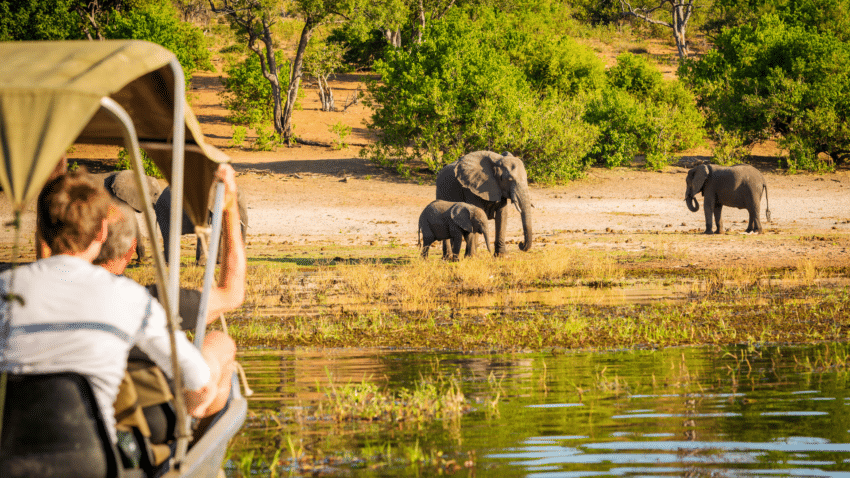The pandemic not only drove new ways of working, it changed the way we view our careers and also how we view travel. Expedia recently coined the idea of the GOAT mindset. Travelers want their next trip to be their Greatest Of All Trips (GOAT), and are in pursuit of transformative and meaningful travel experiences. In order to deliver these experiences seamlessly, you’ll need a stellar team and enough staff.
As such, tour operators need to take action. Staff shortages will undoubtedly remain a key issue for the tourism sector throughout the year to come, despite rising demand. Now is the perfect time to ramp up your efforts to attract and retain a sufficient workforce. But where to begin? From hiring to retention, let’s explore our top strategies to attract and retain a workforce you can count on.
Hiring Strategies

There are many factors to consider even before beginning to look for staff. Does your brand have a good online presence? Are you aware of current labor trends? Here, we share our top 5 hiring strategies that will set you up to attract the employees you need.
1) Put on your job seeker hat
Every few years, the job market goes through big changes. Stay relevant by familiarizing yourself with current employment trends. Put yourself in the shoes of a jobseeker. Spend a few minutes setting up job alerts across your favorite job boards for positions similar to those for which you’re hiring. How does the description of the job stack up? How competitive are your wages relative to the industry? Services like Payscale can help you compare wages for similar roles across the industry.
2) Consider alternative hiring strategies

With the current staffing challenges in attracting and retaining staff, it makes sense to shake up your hiring strategy. For example, make an effort to post positions at locations you may not have previously considered. Examples include university & college career placement offices. A recent and effective trend is to post a video across social media describing the positions you have available with a call to action to apply. LinkedIn is a great place to post positions as well. Additionally, consider hosting an in-person or virtual hiring fair.
3) Reskill and/or upskill.
Take an objective look at your staff members. Are there current staff members who can be promoted internally or retrained with new skills that will benefit both the employee and your business? Currently, there are a high number of incentive grants for retraining, particularly in the tourism sector. Reach out to local tour agencies, DMOs and government organizations to learn what is on offer for retraining. Frequently, underemployed people may qualify for subsidized training or grants, and that’s a worthwhile avenue to explore.
4) Consider a collateral refresh
Does it look FUN to work at your company? Well, it should! Tourism operators who differentiate their positions as ‘fun’ and ‘flexible’ often receive higher applications. Many seasonal workers dream of working outside for the summer, and your positions may just check that box. Hire a graphic designer and make a collage of great staff-centered photos to accompany job descriptions. When prospective staff can visualize working at your company and it looks fun, you are likely to receive more applicants. A bit of visual branding in photos of fun, engaged staff members will help drive home the idea that your business is a great place to work.
5) Consider alternative employment offerings

Explore streams of potential employees that you may not have previously considered such as workaways, part time, or remote if at all possible. Volunteer workers or interns may be ideal to lend a hand during peak times when your operation could benefit from extra hands. Of course, it’s a good idea to make sure you’re up on the laws that govern these types of employment in your region.
Making the Most of the Staff You Have
Now that we’ve covered how to find those key employees, it’s important not to overlook the importance of retention. Let’s explore strategies to not only retain your staff, but also to accomplish more with the same amount of hands.
1) Extend your season

Extending the length of your season can be attractive to job seekers seeking longer employment. Consider keeping staff employed for shoulder season. For example, after a busy river rafting summer, consider offering fall wildlife watching tours long after the rapids have dissipated for the year. Other ideas include off-season rentals for school groups, hosting courses, concerts, family reunions and more.
2) Consider low-touch offerings
Consider expanding your tour selection with low-touch offerings. What does that mean, exactly? Low-touch tours are those that require far less resources to execute then their high-tough counterparts. Examples of low-touch offerings include self-guided walking tours, self-guided rentals and virtual tours. It might mean managing a rental fleet of equipment or setting up a completely virtual experience, but low-touch offerings can significantly ease the burden of trying to find staff.
3) Refine your products
When experiencing staff shortages or hiring issues, consider abandoning tours that have chronic under-enrollment. With an anticipated influx in travel globally, now is a great time to establish new data points on your tours. Where are current tourism trends leading? How has the landscape around your tour changed? Now is an important time to keep your finger on the travel pulse. Alternatively, if you’re currently in your low season, examine your past customer trends to make informed decisions on future offerings.
4) Develop employee returning/retention programs

Consider amping up your retention game by incentivizing employees to return for subsequent seasons. If you’re able, a wage increase for high performing and/or returning employees is always a great way to decrease turnover. Your employees are also the perfect people to spread the word that you’re hiring. For example, offering a financial incentive to employees who refer a new hire is always a win-win.
5) Consider further automation
Automation won’t necessarily help with finding or retaining staff, however you may find that with key automations in place, fewer staff members are required for manual tasks. For example, are you taking advantage of all the features your booking software has to offer? It might be wise to revisit any new feature releases that you may have missed, or perhaps you simply aren’t using all the available features. Many things can be automated, such as payments, pre- and post-trip notifications, and more.
Preparing For a Great Season
While the demand for travel has skyrocketed in recent months, the labor supply hasn’t risen to match industry demand. As such, many tourism businesses have found themselves unable to fill job vacancies – if you’re in that position, you’re far from alone. But you don’t need to resign yourself to another tough season. By deploying some chosen strategies from those we’ve suggested, you’ll be well on your way to develop a winning staff shortage strategy that reflects your unique business challenges.





